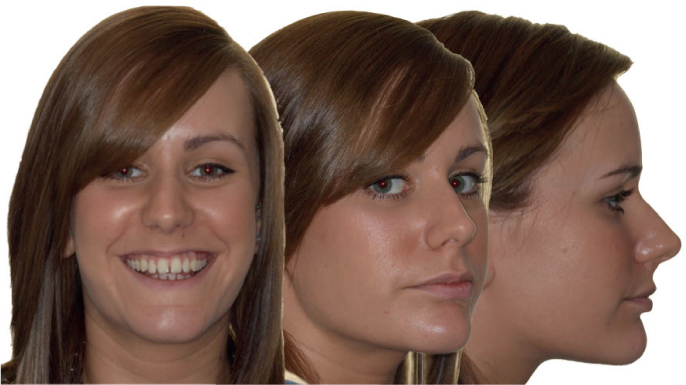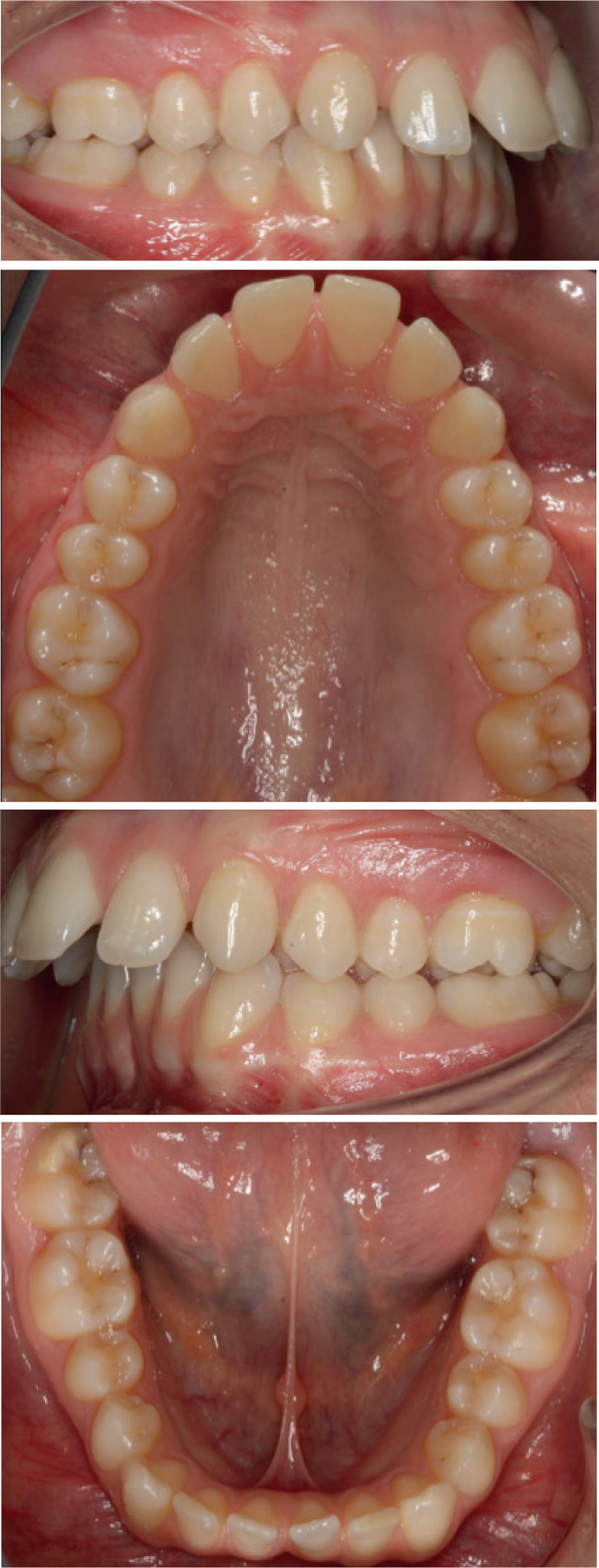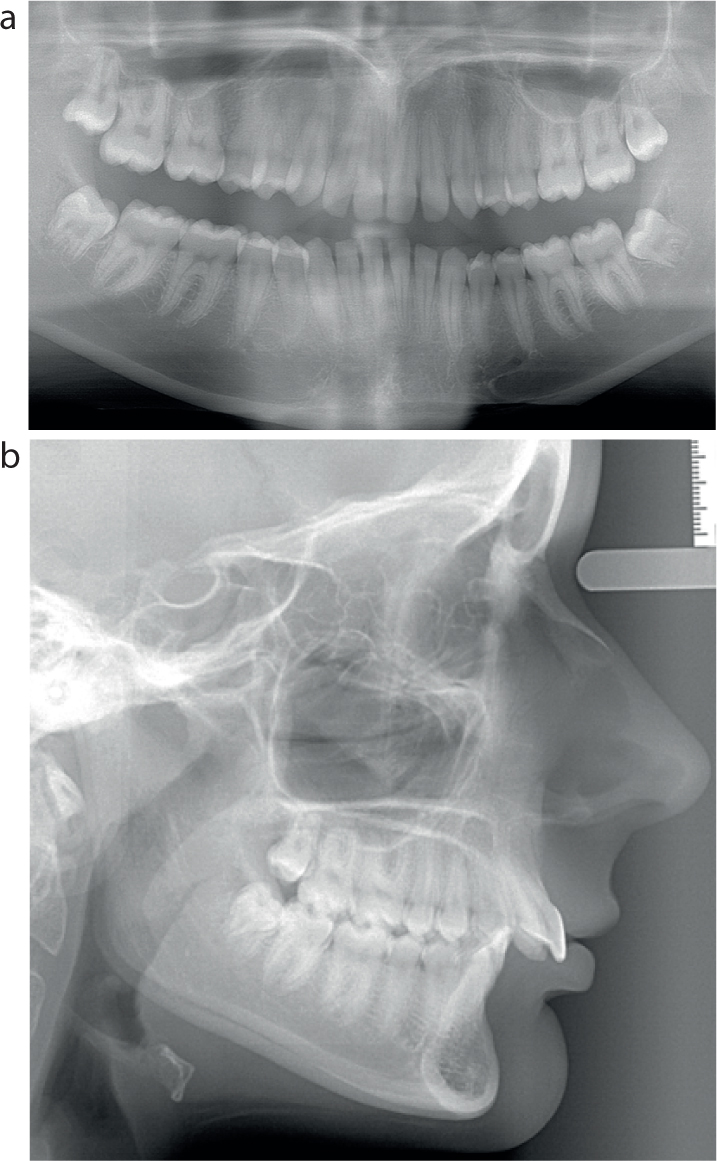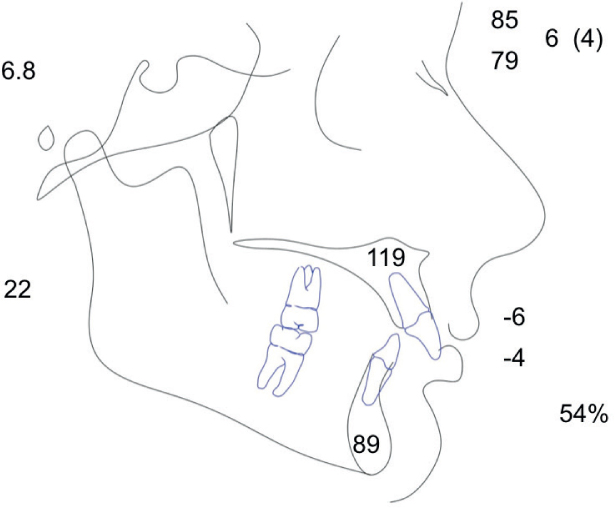Article

A healthy 18-year-old woman presented to the orthognathic clinic deeply concerned about her significantly increased overjet of 12 mm. She said she disliked the look of her goofy teeth, and she was embarrassed about eating in public.
Extra-orally, she presented with a Class 2 skeletal pattern with a reduced FMPA. Her mandible was retrognathic, but she had a prominent pogonion and good soft tissues, meaning her chin point was in a good position aesthetically (Figure 1).

Intra-orally she had a full permanent dentition, and her buccal segments were a full unit Class 2. Her upper labial segment was proclined and slightly spaced, and her lower labial segment was upright, bearing in mind the 22-degree MMPA. Her overjet was 12 mm and her overbite was 5 mm (Figure 2). Radiographs revealed a full permanent dentition with unerupted wisdom teeth (Figure 3). Cephalometrically, she had a mild Class 2 with reduced MMPA, proclined upper and effectively retroclined lower incisors (Figure 4).



What would you do to sort out the patient's concerns about her overjet?
